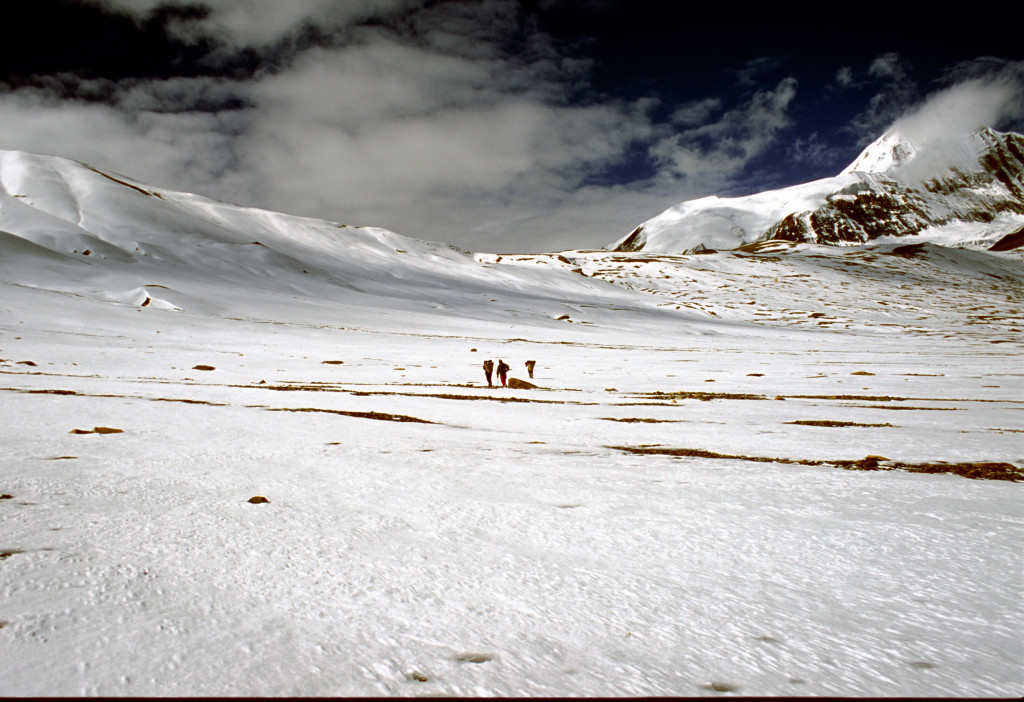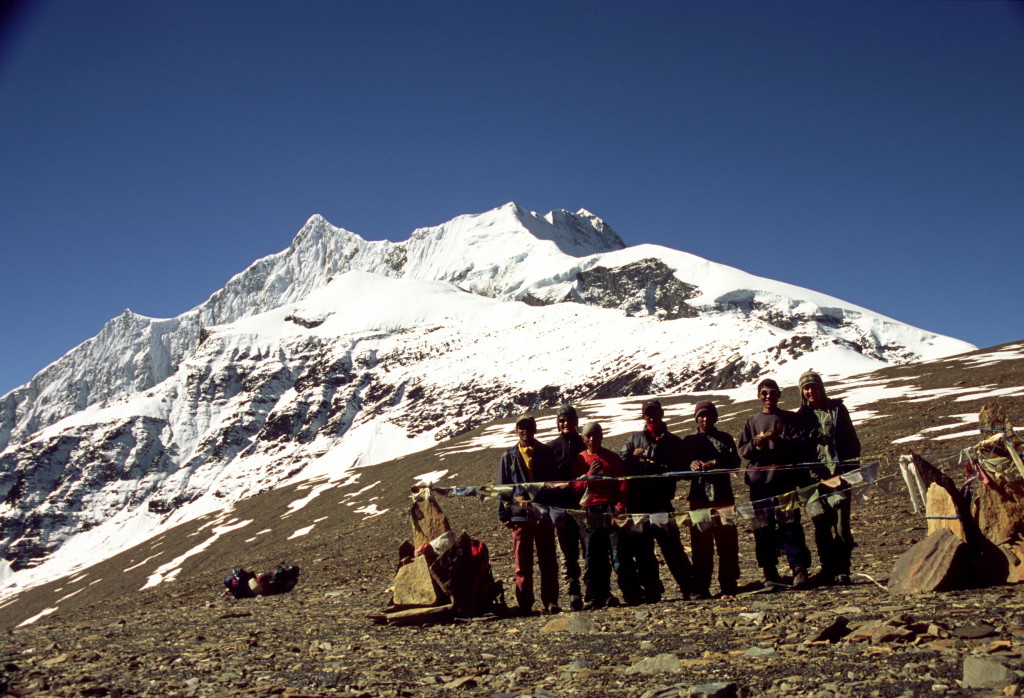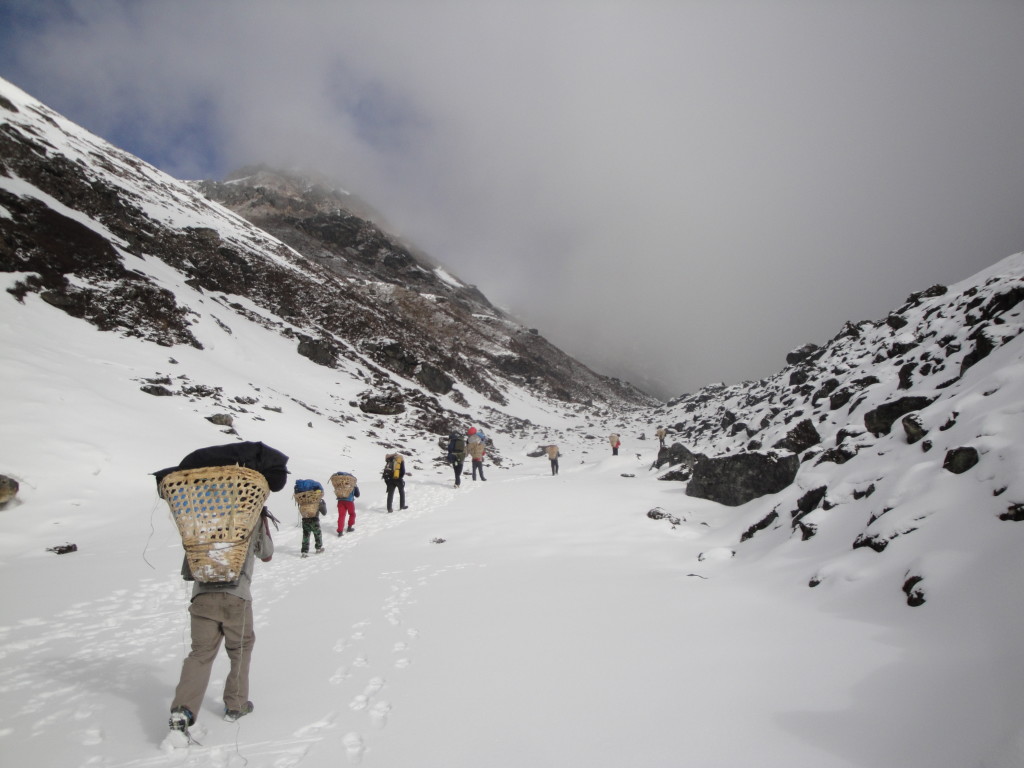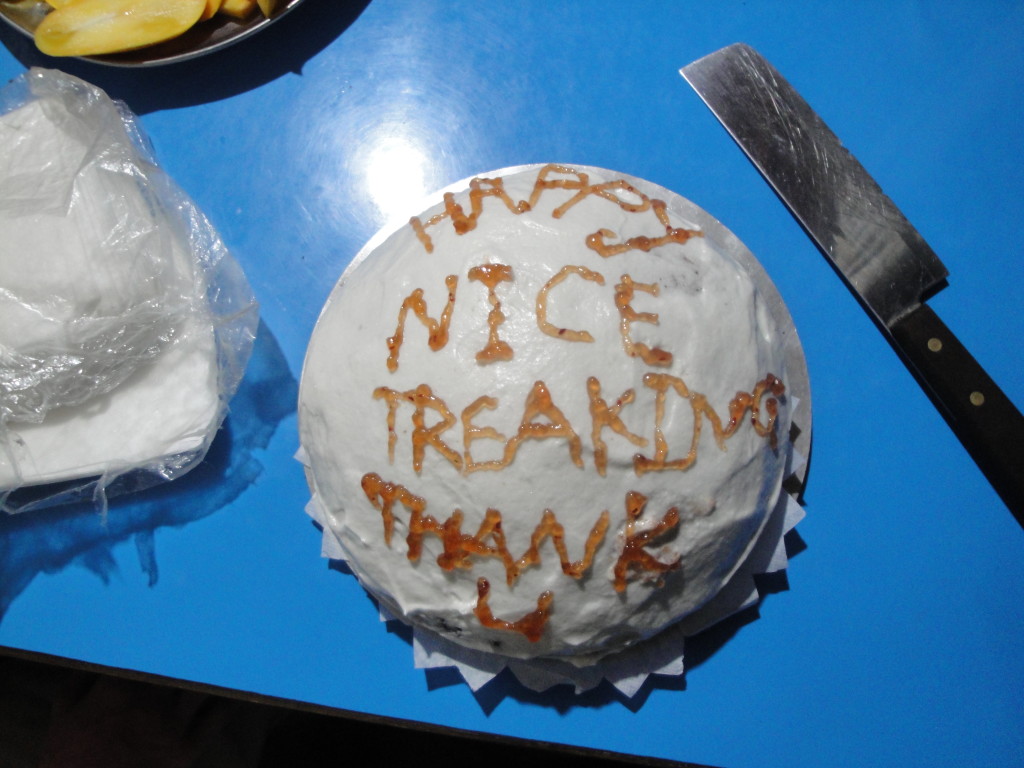Kyle Larson is an Assistant Professor a the University of British Columbia’s Okanagan Campus. He has spent the past 12 years using a variety of techniques to understand the structural and tectonometamorphic evolution of the Himalaya and (more recently) other collisional zones. You can find more about his research on his website, ResearchGate, or Google Scholar.
I first started working in the Himalaya as a student in the fall of 2004, when I spent a month in Nepal helping a fellow student with her fieldwork and then completing some of my own. Since then I have been looking for ways to go back to the region as often as I can to satisfy my geologic curiosity, to visit different unreal mountain-scapes, and to spend time imbedded in the culture with the friends I have made over the years.

Photo 1. Nepali crew members walking towards French Pass in the Dhaulagiri Himal. (Photo credit – K.Larson)
Scientifically, the Himalaya have provided a constant supply of interesting data to interpret and publish. Many of the studies that have resulted from my work in the region have attempted to answer fundamental questions about when continental collision initiated (Larson and Cottle, 2015) and/or the processes that have accommodated the continued convergence (Larson et al., 2010; Larson et al., 2010; Larson et al., 2013, Larson et al., 2014, Larson et al., 2015). And while the science continues to evolve and keep me interested in continuing to work in the region, the people there are equally compelling.

Photo 2. Photo of some of our team with our Nepali crew after a long day trekking. (Photo credit – K.Larson)
The success of every research trek we embark on is almost completely dependant on the local support crew assembled to keep us safe, well-fed, and on-track.

Photo 3. The research team standing atop Dhampus Pass in the Dhaulagiri Himal. (Photo credit – K.Larson)
Much of the time this involves walking for hours over difficult terrain while carrying dokos (baskets) strapped to their heads.

Photo 4. The crew setting out from camp in the morning heading over Gyago La in the Numbur region of east-central Nepal. (Photo credit – K.Larson)
But it can also involve complex road-side mechanical repairs in the middle of a yak pasture using whatever is on hand. (Like an extra seatbelt to secure a broken leaf-spring.)
In the end, most treks finish the same way. After weeks of walking and living together, replacing the food we eat in the dokos with rocks we collect, there is a big final meal where we all get a chance to unwind and relax.

Photo 6. A cake baked for the trek-ending final meal. ‘Happy nice treaking’ indeed. (Photo credit – K.Larson)
The combined experience of exciting, cutting-edge science and spending time in warm and welcoming cultures has made my work in the Himalaya extremely rewarding. I am looking forward to getting back there soon!

Photo 7. Pradap Tamang, who has been with me as my cook/guide for every trek in Nepal, with Everest reflected in his sunglasses. (Photo credit – H. Buckingham)
![]() This work is licensed under a Creative Commons Attribution-NonCommercial-ShareAlike 4.0 International License.
This work is licensed under a Creative Commons Attribution-NonCommercial-ShareAlike 4.0 International License.

